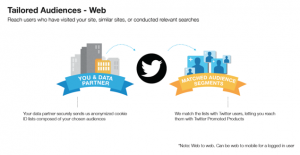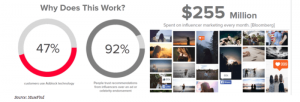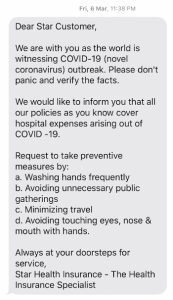— February 8, 2019

rawpixel / Pixabay
Whether you are an entrepreneur, marketing director or a content marketing specialist, developing a social media strategy for your company and managing all the different accounts can be a daunting process. But the importance of social media to your overall strategy can’t be ignored.
Social media is one of the most effective ways to grow your business and generate new leads, and having a presence on major social media platforms is essential in today’s digital landscape. But you don’t want to jump in without a plan! We’ve put together several steps to help you get started with managing your social media accounts.
Develop a strategy
Just like any other marketing initiative, having a strategy is important for achieving your goals. A strategy guides the kind of content you post, serves as a way to track your successes and where you’re falling short of your goals. Your social media goals should be aligned with your brand and the overall marketing goals of the company, so it is helpful to have an executive who has knowledge of these goals involved in the planning.
Create unique content for each platform
Determine your target audience for each platform and the kind of content that will resonate with them. A common social media marketing mistake is to post the same content across all of your accounts, when your strategy should actually be different for each one. Each platform has different audiences, purposes, and vocabulary. Customizing your content to be unique to each platform doesn’t have to be difficult—it simply requires some knowledge of each platform’s nuances. Here’s a brief summary of the best kinds of content to post on the major platforms:
LinkedIn is a professional networking platform where you can showcase jobs and career information, company news and updates, and thought leadership content such as webinars, whitepapers and blog posts.
Facebook allows for a more conversational tone compared to LinkedIn, and you can share posts about your employees, company culture, community involvement, or events. Video marketing is a big trend in 2019, and Facebook is a great platform for it. After YouTube, Facebook is the second leading source for the consumption of video content.
Twitter should be viewed as a real-time platform, and expect your tweets to get a half-life of only 18 minutes. Share lots of relevant and timely content throughout the day that adds value for your audience such as news stories, relevant articles from industry thought leaders and your own educational content. Also note that tweets with images receive 150% more retweets than those without.
Instagram is the place to post your best-quality photos and share behind-the-scenes photos that feature your company culture. Sometimes brushed aside as an irrelevant platform for businesses, Instagram is actually a great way to showcase your work and your company.
A common social media marketing mistake is to post the same content across all of your accounts, when your strategy should actually be different for each one.
Be careful when connecting your Instagram profile to your other social media accounts and using it as a hub for posting to multiple. Not only is Instagram content not always appropriate for other platforms, there are technical differences as well. For instance, sending an Instagram post to Twitter shares a link instead of the actual image, and an Instagram handle may not be the same on this platform, therefore showing up as a dead link on Twitter.
Some content is appropriate for multiple platforms, but it’s important to edit it to be platform-specific, so that your audience has a reason to follow you on multiple channels and isn’t seeing the exact same content repeatedly. Sometimes this simply requires small tweaks in vocabulary and formatting.
Aim for quality and consistency over quantity
Think of each social media platform as a plant that needs regular, consistent care over time to grow. If you’re just getting started with social media for your company, we recommend beginning with one or two platforms and establishing a regular posting interval, aiming for quality and consistency. Your following on each will learn to expect to see your posts every so often and will rely on your insights. Once you feel comfortable with those platforms, you can expand to using others.
Plan a content roadmap
Once you have a strategy, it’s helpful to create a content roadmap that identifies the topics you want to cover on a monthly, weekly or quarterly basis. Research content roadmaps and editorial calendars to see which works best for you, or create your own. Sometimes a simple spreadsheet does the job.
Developing a content roadmap takes time, especially if you’re planning blog posts as part of your social media content.
What many won’t tell you is that developing a content roadmap takes time, especially if you’re planning blog posts as part of your social media content. But don’t get bogged down in the details. Plan ahead yet be flexible to time-sensitive events. If there’s an event that your company should share with your audience, simply postpone other posts that aren’t time sensitive to a later date. Every once in a while, you may reach a point where you are low on content and don’t know what to post. As you develop your content roadmap, this is a great time to come up with evergreen content – content that is always relevant – that you can pull from during those content dry periods.
Schedule content
Once you have a roadmap, you can begin scheduling content to post automatically on some platforms, which will save you time. Reserve a time slot during your day to focus on scheduling content for one week – Fridays often work best. Scheduling one week at a time is very manageable and keeps the process from becoming overwhelming. It also keeps your content up-to-date and relevant for your followers, and it helps you stay responsive to time-sensitive events or posts. As you’re scheduling, keep in mind the best time to post on each platform.
Even after you’ve scheduled all of your social media posts for the week, be sure to monitor your accounts daily to respond to comments or discussions. It’s important to interact with your followers, and a quicker response time is favorable for your company page on platforms such as Facebook, which displays your average message response time.
There are many social media tools out there that can help with streamlining your social media efforts. Here are a few to consider:
Hootsuite – It’s one of the most well-known platforms in the industry. Hootsuite allows you to schedule posts and manage all profiles from a single dashboard. The platform supports 35 different social networks, and you can set up streams to track your own content next to the content of users you follow or from a specific hashtag. You do have to pay for its analytics tools.
Pricing: Free for 3 social profiles; $ 30/month for 10 profiles, 1 user and unlimited scheduling; $ 129/month for 20 profiles, 3 users and unlimited scheduling; $ 600/month for 35 profiles, 5-10 users and unlimited scheduling
Buffer – With Buffer, you can load posts into a queue and have the platform stagger them throughout the day for you. The interface is very clean and easy to use and offers simple analytics. You can also easily schedule content straight from web pages or your social apps through its extensions.
Pricing: Free for 3 accounts and up to 10 scheduled posts; $ 15/month for 8 accounts and 100 posts; $ 99/month for 25 accounts and 2000 posts; $ 199/month for 50 accounts; $ 399/month for 150 accounts
Sprout Social – It offers detailed analytics, multi-user collaboration tools, and a really simple scheduler. It also has a built-in CRM system, and you can use its scheduler to share blog content automatically. Sprout Social is known for great customer support and its crisp and clean aesthetic, but the pricing makes it a more appropriate tool for larger firms.
Pricing: $ 99/month for 5 social profiles; $ 149/month for 10; and $ 249/month for 10 profiles and more advanced features
You also may be able to utilize the social media tools of your CRM, such as Hubspot, which enables you to have your blog posts, landing pages and other campaign content all in the same place that you manage your social media accounts. That way, you can easily share this content as well as monitor interactions and your social analytics.
These are just a few of the many social media tools available to you. We suggest trying some of them out and seeing which works best for you.
Track Metrics and Analytics
Be sure to take the time to track and measure your social media analytics and goals in order to continue to refine your strategy. Most social platforms have their own built-in analytics tools, and many of the social media management tools do too. Google Analytics can also offer important insights on referrals and lead generation. There are rich insights to be gained from your social media analytics that go well beyond follower counts. They can also be a powerful tool in proving the ROI and value of your social media efforts.
Commit to the long haul
Getting started with social media takes time and effort to build your following. Commit to the long haul! Develop a reasonable content roadmap that you feel comfortable with and stick to it. If you’re regularly sharing quality content that’s valuable to your target audience, then the followers will come.
Digital & Social Articles on Business 2 Community
(12)









